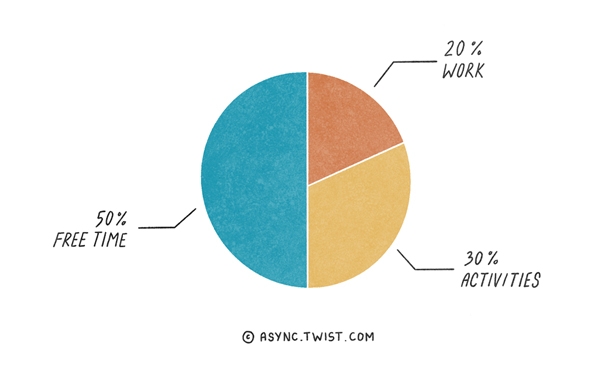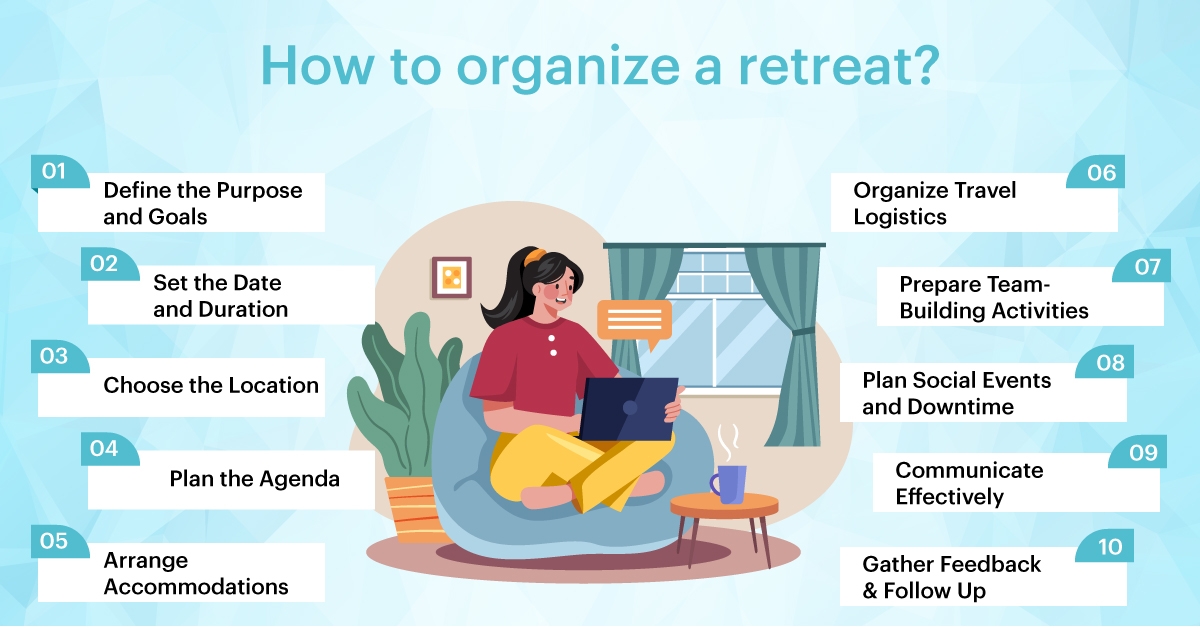Remote work
The Role of Retreats in Remote Work Cultures (Good or Bad?)
Shyam Nagarajan / Reading Time : 8 mins
The current trend of remote work has changed how we view work in this era. With the advent of remote work, organizations are now able to access talents globally, cut down on costs and improve the lives of their employees. On top of all that, though, it has also posed hurdles regarding maintaining a cohesive and connected company culture in this state of age. Fostering a sense of community and connection among remote teams has become paramount. And so enters retreats.
Retreats provide an opportunity for distributed teams to meet face-to-face and enhance the bonds that underpin strong remote working cultures. Retreats can help to bridge physical distance between team members through provision of dedicated spaces for collaboration, team building as well as strategic alignment hence creating common grounds for different perceptions and fostering camaraderie.
"Are retreats essential or just expensive breaks? This article dives into the growing role of team retreats in remote work culture. It covers how retreats drive connection, creativity, and alignment - while also addressing budget concerns and inclusivity."
📑 Key chapter:
Retreats in Remote Work Culture
A planned remote work retreat is a gathering of a company’s employees working remotely, usually held in an off-site location. These can involve anything from team-building to strategic planning or even all-hands meetings. The common thread is that they bring the remote workers together physically, creating opportunities for interpersonal connections and collaboration that can be elusive in virtual environments.
Hear from Mine on how a retreat drives happiness and productivity:
Different types of retreats serve various functions in a remote work setting. Team-building retreats are aimed at strengthening relationships and building trust among members through activities and shared experiences. Strategic planning retreats provide a dedicated space where remote teams can align towards goals, brainstorm and collaborate on key undertakings. Company-wide retreats bring together the entire remote workforce, facilitating cross-functional interactions, promoting knowledge exchange and reinforcing organizational culture.
Several remote-first companies using our product, WorqFlexi, utilize retreat as a way to align strategies and also build relationships.
Check out how Incubyte capitalizes on on-demand collaboration:
How India's Premium Software Company Established A Remote-First Culture
Read NowHow Do Retreats Help in a Remote Work Culture?
Remote work poses one of the greatest challenges towards making meaningful social connections within an organization. Retreats allow for face-to-face engagements needed to develop trust relationships, decode non-verbal cues as well as foster belongingness. Remote workers can therefore engage with their colleagues at more personal levels during company trips which comprise team bonding events among others.
Harmonizing Goals and Collaboration Fostering
Strategic alignment and efficient collaboration are hard to maintain in a remote work environment. Individuals in teams can thus choose to come together, share ideas and work towards the same things in retreats. Strategic planning dependencies allow remotely situated groups to delve into deep discussions, brainstorming sessions, and participatory decision-making procedures that ensure everyone is on the same page.
In a conversation by CHRO of L&T Technology Services with ET HR World, employee retreats are considered great team-building activities.
Remote Work Culture Continuity
This is because a strong company culture is central to employee involvement and performance as well as retention. When it comes to remote working conditions, however, sustaining or nurturing these kinds of cultures can be quite challenging. Retreats provide an opportunity for strengthening the organization’s values, mission as well as cultural tenets. Through uniting remote workers, companies can also create these shared experiences that enhance emotional attachment with the corporate culture of a firm thereby giving rise to oneness or purpose among members of staff.
Another company, Twist, has a specific agenda for remote work retreats.

How to Organize a Retreat for a Remote-First Company?
Organizing a company retreat can be a daunting task, especially for remote-first organizations where employees are dispersed across various locations. However, these retreats are crucial for fostering team building, improving communication, and aligning company goals.

Here are some key considerations for organizing a successful retreat:
- Define the Purpose
Clearly define the purpose and objectives of the retreat. Is it primarily for team building, strategic planning, skill development, or a combination of these? Having a well-defined purpose will guide the agenda and activities.
- Choose the Right Location
Select a location that is easily accessible for most attendees and offers adequate facilities for the planned activities. Consider factors such as travel time, accommodation options, and potential distractions.
What matters is also the type of meeting room you book to collaborate. Check out a range of spaces here:
- Plan the Agenda
Develop a comprehensive agenda that strikes a balance between work sessions, team-building activities, and downtime. Ensure that the agenda aligns with the retreat's purpose and allows for sufficient breaks and networking opportunities.
Take a look at the itinerary of a retreat by Twist here.
- Foster Team Building
Incorporate activities that promote team bonding, such as icebreakers, problem-solving challenges, and outdoor adventures. These activities can help break down barriers and foster a sense of camaraderie among remote team members.
How Can GoFloaters Help in Organizing Retreats?
GoFloaters, a leading provider of corporate housing solutions, can be an invaluable partner in organizing successful retreats for remote-first companies.
Here's how GoFloaters can assist:
- GoFloaters offers a wide range of fully furnished and serviced apartments in prime locations across various cities. Their flexible rental options and customizable amenities make it convenient to accommodate attendees from different locations under one roof.
- GoFloaters can leverage their extensive network of partners to source suitable venues for the retreat, taking into account factors such as capacity, location, and amenities. This can save companies significant time and effort in the venue selection process.
- GoFloaters can accommodate varying group sizes, from small team retreats to larger company-wide events, ensuring a consistent level of service and quality across all locations.
Want a personalized solution?
How to Measure The Impact of Remote Work Retreats?
It is important to evaluate whether remote work retreats are producing desired results so that such expenses can be justified with measurable impacts. There are several metrics and methods by which organizations should assess their effectiveness for continuous improvement purposes at all times during retreats.
To begin with, employee engagement surveys can provide insights into the level of engagement, motivation, and job satisfaction before and after retreats. These can be utilized to pick out any improvements in employee feelings and particular areas that may need attention. Retreats’ work outcomes can also be assessed through team productivity, project timelines and overall performance as well as tracking productivity levels.
Besides this, monitoring rates of retention of workers in addition to turnover assists in revealing whether retreats are effective at promoting a positive culture of remote working. These metrics are significant for evaluating the long-term benefits of retreats as a good culture increases employee retention.
Building a Positive Remote Work Culture - Insights from Remote Work Expert Ali Greene
Read NowEqually important are collaboration and communication metrics since retreats aim at improving cross-functional collaborations and effective communications among remote teams. The number and quality of these engagements might offer insight regarding how dynamics within groups have been impacted by such events. For instance, post-retreat surveys focus groups or interviews will be good avenues for gathering qualitative feedback. This gives room for further exploration into what participants experienced from the deep end, discovered useful areas and suggestions for future meetings.
Information gathered through observation, such as shifts in team dynamics, communication styles, and cooperative behaviors, can potentially yield insightful information about the effects of retreats.
It's important to assess the immediate results, but it's just as important to think about the long-term advantages of funding remote work retreats. These gatherings can support enhanced employee engagement and retention, a more robust corporate culture, and general organizational performance. Businesses may optimize their getaway strategies and cultivate a successful remote work culture by regularly assessing and improving them.
Summing Up
Companies that put retreats first and make significant investments in building a good remote work culture will be better positioned to draw and keep top people, encourage innovation and collaboration, and promote long-term success as remote work continues to gain traction.
The future of work is remote, and retreats play a critical part in creating a favorable culture for remote workers. Companies can unleash the full potential of their remote workers and foster a flourishing, connected, and productive workforce by adopting retreats as a crucial part of their remote work strategy.


